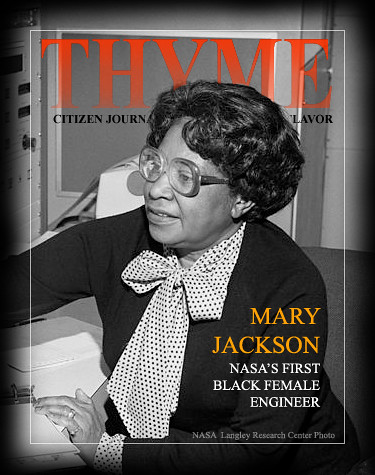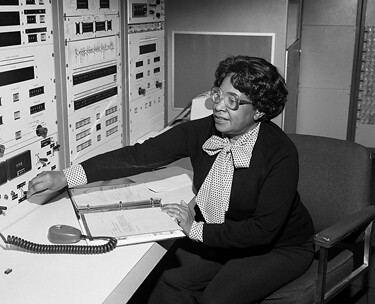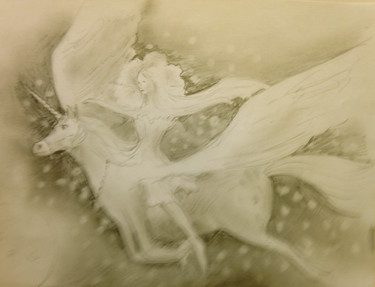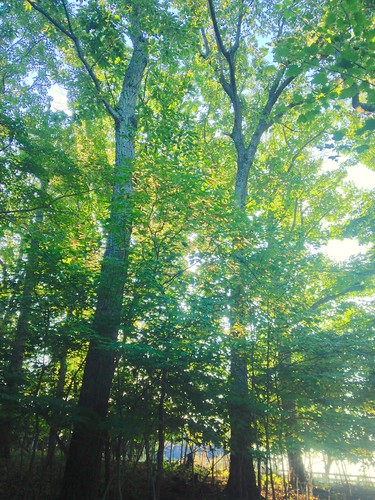
Volume XII, Issue VII
Divine Design, Mary Jackson
How NASA Got its First Black Female Engineer
Watching the movie Hidden Figures, there was a place where I found myself clapping and crying, it is the scene where Paul, a colleague of Katherine Johnson, serves her coffee! If you have not seen the film yet, I recommend it highly. It follows the careers of three women in NASA's Langly Research Center's West Computing Division... a group of genius mathematicians who because of their skills found themselves in a highly important part of the space race with incredible responsibility.
That in itself would be a great and wonderful story but it gets even better. In the height of segregation in mid-Twentieth Century Virginia, in the 1950's, the brilliant minds of the West Computing Division were all women and they were African-American! Women were actually not strangers to engineering departments. My MOTHER had done similar work in aircraft design for the Martin Company in Baltimore. In fact, she is responsible for my FAVORITE part of the Kirchman Studio's Employee Handbook (if there is such a thing).
When Mom started at the Martin Company's Engineering Department, some old guy snarled: "Get me some coffee deary." Big mistake! Mom rose to her full almost five foot frame and snapped back: "I am here to do your calculations, and assist in design, but I will NOT fetch your coffee!" Dad, who worked in the same department, married her!
The Fay Kirchman Rule is how I honor her memory. Simply stated: "Female Colleagues are NOT required to make or fetch the coffee of their male counterparts, regardless of rank." My former assistant Kristina will attest to it. I always made the coffee and handed her a cup when she came in... and always fondly remembered Mom! The studio operated on Biblical Principle: HE-brews! So when Paul hands Katherine a cup of coffee, I remember Mom!
Mom had studied Mathematics and Physics before becoming a school teacher in Manassas, Virginia. Her career path was very similar to Mary Jackson's in that regard. Mom was doing graduate work at John's Hopkins when she was tapped to work for an engineering team at Martin. While she had to go against resistance to women in the sciences, she never had to contend with Jim Crow Laws. One of her Mentors in College was Dr. Robert Edward Loving, who taught Physics at Richmond College (before it and Westhampton were merged to become the University of Richmond). She would remember snippets of Dr. Loving's lectures in conversation with us children: "Can my little dog Garfield shake a bridge?" he would ask in a dialogue still strongly influenced by the black children who were his childhood playmates.
Mary Jackson graduated from Hampton Institute in 1942 with a dual degree in Math and Physical Sciences, and accepted a job as a math teacher at a black school in Calvert County, Maryland. Like Mom, the great war opened up the opportunity for her to go further. Langley was an important center for aeronautical research then, but it was not until 1951 that Mary joined the West Computing Division at Langley.
Margot Lee Shetterly writes: "After two years in the computing pool, Mary Jackson received an offer to work for engineer Kazimierz Czarnecki in the 4-foot by 4-foot Supersonic Pressure Tunnel, a 60,000 horsepower wind tunnel capable of blasting models with winds approaching twice the speed of sound. Czarnecki offered Mary hands-on experience conducting experiments in the facility, and eventually suggested that she enter a training program that would allow her to earn a promotion from mathematician to engineer. Trainees had to take graduate level math and physics in after-work courses managed by the University of Virginia. Because the classes were held at then-segregated Hampton High School, however, Mary needed special permission from the City of Hampton to join her white peers in the classroom. Never one to flinch in the face of a challenge, Mary completed the courses, earned the promotion, and in 1958 became NASA’s first black female engineer. That same year, she co-authored her first report, Effects of Nose Angle and Mach Number on Transition on Cones at Supersonic Speeds." [1.] Her journey to becoming an engineer is chronicled in Hidden Figures.
She worked for two decades as an engineer and authored over a dozen papers on air flow around aircraft. She became a mentor to young people, helping students build a wind tunnel at a Hampton Community Center. Thanks to the Movie Hidden Figures her story will inspire new generations of young scientists to do great things!

Mary Jackson. NASA Langley Research Center Photo.
Seeing Things in 'Living Color'
In the Vietnam era, American prisoners confined in the infamous 'Hanoi Hilton' developed some unique strategies for keeping their sanity in an environment that was designed to break them. One man, a musician, carefully drew a keyboard on a piece of scrap wood. He hid it in his cell and although it was not capable of producing sound, the man would 'sit' at it and composed pieces of music which he later was able to play. Another prisoner was a golfer. Every day he would 'play' an imaginary round in his head. Upon his release and subsequent physical rehabilitation, he went out to the golf course. His initial score was pretty low considering the years he had spent unable to play.
In the 1960's, as man raced to the moon, engineers had to develop procedures that were up to the time unheard of. My Father was an aeronautical structural engineer and in his work he tackled the problem of getting sensitive instruments and equipment into space on top of a rapidly accelerating missile. In that day the success rate for launches was pretty abysmal, something like a 50% success rate, so Dad and his team went to work imagining the forces that would assault an ascending rocket.
They developed a machine they called the Launch Phase Simulator. It was an enormous centrifuge to simulate the increased g forces of launch. A vibrator simulated the shock and vibration a spacecraft was likely to experience as it went up. The subject was mounted in a vacuum chamber and the atmospheric pressure was decreased to simulate flying into space. Finally, a system of heating and cooling apparatus simultaneously baked and cooled respective sides of the subject craft.
By imagining and simulating the possible combinations of forces assaulting an ascending spacecraft, engineers were able to make remarkable improvements in the success rate of launches.
(to be continued)

A Faerie's Ride. Illustration by Bob Kirchman
Phantasies
By George MacDonald, Chapter 2
Where is the stream?' cried he, with tears. 'Seest thou its not
in blue waves above us?' He looked up, and lo! the blue stream
was flowing gently over their heads."
~ from Novalis' Heinrich von Ofterdingen.
While these strange events were passing through my mind, I suddenly, as one awakes to the consciousness that the sea has been moaning by him for hours, or that the storm has been howling about his window all night, became aware of the sound of running water near me; and, looking out of bed, I saw that a large green marble basin, in which I was wont to wash, and which stood on a low pedestal of the same material in a corner of my room, was overflowing like a spring; and that a stream of clear water was running over the carpet, all the length of the room, finding its outlet I knew not where. And, stranger still, where this carpet, which I had myself designed to imitate a field of grass and daisies, bordered the course of the little stream, the grass- blades and daisies seemed to wave in a tiny breeze that followed the water's flow; while under the rivulet they bent and swayed with every motion of the changeful current, as if they were about to dissolve with it, and, forsaking their fixed form, become fluent as the waters.
My dressing-table was an old-fashioned piece of furniture of black oak, with drawers all down the front. These were elaborately carved in foliage, of which ivy formed the chief part. The nearer end of this table remained just as it had been, but on the further end a singular change had commenced. I happened to fix my eye on a little cluster of ivy-leaves. The first of these was evidently the work of the carver; the next looked curious; the third was unmistakable ivy; and just beyond it a tendril of clematis had twined itself about the gilt handle of one of the drawers. Hearing next a slight motion above me, I looked up, and saw that the branches and leaves designed upon the curtains of my bed were slightly in motion. Not knowing what change might follow next, I thought it high time to get up; and, springing from the bed, my bare feet alighted upon a cool green sward; and although I dressed in all haste, I found myself completing my toilet under the boughs of a great tree, whose top waved in the golden stream of the sunrise with many interchanging lights, and with shadows of leaf and branch gliding over leaf and branch, as the cool morning wind swung it to and fro, like a sinking sea-wave.
After washing as well as I could in the clear stream, I rose and looked around me. The tree under which I seemed to have lain all night was one of the advanced guard of a dense forest, towards which the rivulet ran. Faint traces of a footpath, much overgrown with grass and moss, and with here and there a pimpernel even, were discernible along the right bank. "This," thought I, "must surely be the path into Fairy Land, which the lady of last night promised I should so soon find." I crossed the rivulet, and accompanied it, keeping the footpath on its right bank, until it led me, as I expected, into the wood. Here I left it, without any good reason: and with a vague feeling that I ought to have followed its course, I took a more southerly direction.
(to be continued)

Photo by Bob Kirchman
